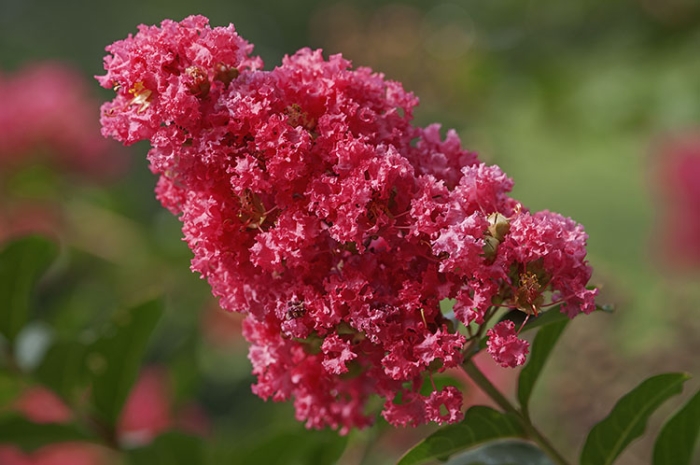Crape Myrtle
(Lagerstroemia indica)
Crape Myrtle (Lagerstroemia indica)
/
/

Dr. Nick V. Kurzenko
Public Domain








































































Estimated Native Range
Summary
Crape Myrtle is valued for its beautiful flowers, long blooming season, and attractive peeling bark. It is commonly used in urban settings, residential gardens, and as a street tree due to its tolerance of pollution and confined soil spaces. This plant thrives in full sun and can tolerate drought once established, making it relatively low maintenance. It prefers well-drained soils and can adapt to various soil types. Regular pruning can help maintain its shape and promote more abundant flowering. Lagerstroemia indica can be potentially invasive in some regions, so it is important to check local guidelines before planting.CC BY-SA 4.0
Plant Description
- Plant Type: Shrub, Tree
- Height: 15-25 feet
- Width: 6-20 feet
- Growth Rate: Moderate
- Flower Color: Pink, Purple, Red, White
- Flowering Season: Summer, Fall
- Leaf Retention: Deciduous
Growth Requirements
- Sun: Full Sun
- Water: Low
- Drainage: Fast, Medium
Common Uses
Bank Stabilization, Bee Garden, Bird Garden, Border Plant, Butterfly Garden, Deer Resistant, Drought Tolerant, Fire Resistant, Hummingbird Garden, Low Maintenance, Potted Plant, Rabbit Resistant, Rock Garden, Salt Tolerant, Showy Flowers, Street Planting
Natural Habitat
Warm temperate and subtropical regions of Southeast Asia, including China, Korea, and Japan
Other Names
Common Names: Crepe Myrtle , Crepeflower , Crape-Myrtle , Chinesische Kräuselmyrte , Lagerströmia , 배롱나무 , Astromelia , Astromero , Cape Myrtle , Lilac Of The South
Scientific Names: Lagerstroemia indica , Lagerstroemia speciosa , Lagerstroemia indica f. alba , Lagerstroemia chinensis , Lagerstroemia elegans , Lagerstroemia indica var. alba , Lagerstroemia indica var. grafii , Lagerstroemia minor , Lagerstroemia pulchra , Murtughas indica , Velaga globosa
GBIF Accepted Name: Lagerstroemia indica L.